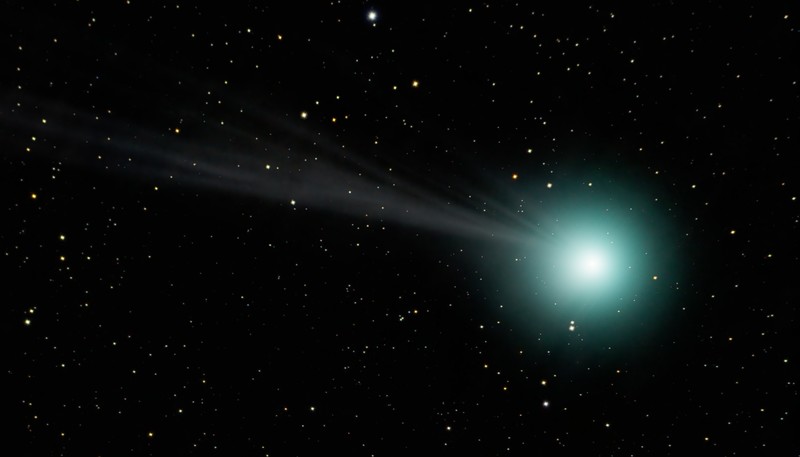Comet LoveJoy 2014
Description
C/2014 Q2 (Lovejoy) is a long-period comet discovered on 17 August 2014 by Terry Lovejoy using a 0.2-meter (8 in) Schmidt–Cassegrain telescope. It was discovered at apparent magnitude 15 in the southern constellation of Puppis. It is the fifth comet discovered by Terry Lovejoy.
By December 2014, the comet had brightened to roughly magnitude 7.4, making it a small telescope and binoculars target. By mid-December, the comet was visible to the naked eye for experienced observers with dark skies and keen eyesight. On 28−29 December 2014, the comet passed 1/3° from globular cluster Messier 79. In January 2015, it will brighten to roughly magnitude 4−5 and will be one of the brightest comets located high in a dark sky in years. On 7 January 2015, the comet passed 0.469 AU (70,200,000 km; 43,600,000 mi) from Earth. It crossed the celestial equator on 9 January 2015 becoming better seen from the northern hemisphere. The comet will come to perihelion (closest approach to the Sun) on 30 January 2015 at a distance of 1.29 AU (193,000,000 km; 120,000,000 mi) from the Sun. Before entering the planetary region (epoch 1950), C/2014 Q2 had an orbital period of about 11000 years. After leaving the planetary region (epoch 2050), it will have an orbital period of about 8000 years.
Equipment and processing
Telescope: Astrotech AT72ED
Mount: Meade LXD55
Camera: Pentax K-30
Filters: None
Guiding: None
Processing: PixInsight
Capture software: Intervalometer
Exposures: ISO1600 140x30
Location: UACNJ
